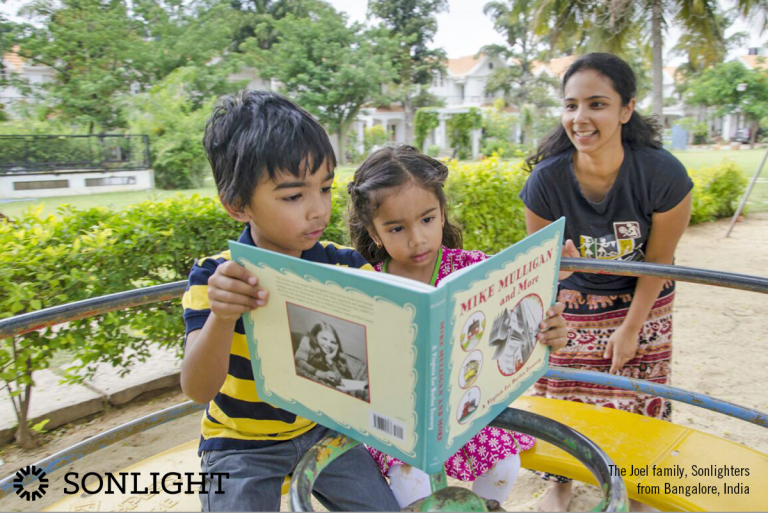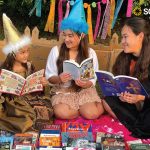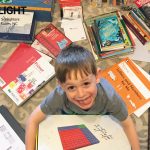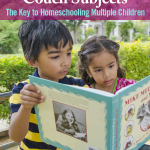
I have heard that there are a few families who manage a different History / Bible / Literature program for each child, but that would be too much for me with my five children. Instead, my approach to homeschooling multiple children is to combine them by using a single curriculum.
Most students in America are in a single grade, and you can observe the progress when a student moves up each year, such as from first grade to second grade. So it may be a new concept for a parent to allow several children on varying levels to work together with a single program.
The easiest way I can explain how I combine my children is to talk about table subjects
and couch subjects. These categories might be a little blurry (just where do Science experiments fall?!), but overall, you can picture which subjects you do at the table and which you do on the couch.
You do reading and discussing on the couch. Of course, depending on your day, your couch may be a waiting room bench, a seat on a bus, or a picnic blanket at the park. Couch subjects are portable and cozy.
You do subjects that require a pencil—math, handwriting, spelling—at a table.
Combining Children with Couch Subjects
You combine children only in the couch subjects. So when you read the History books and the beautiful stories in Read-Alouds, you can do that with a range of ages.
These books are satisfying even for children a few years apart in age. To use an extreme example, Go, Dog. Go! from Preschool still thrills me every time (“It’s a dog party! A big dog party!”) . . . and I am a good three decades past the target audience.
But I don’t have to use such an extreme example. If you’ve ever had your 8-year-old come over to hear you read a picture book to a younger sibling, you’ve seen this at play. The Sonlight History and Read-Alouds are not restricted to a single age. And though the readings do get longer as the children get older, they are satisfying to a range of ages.
Similarly with Science, you can combine multiple ages especially in elementary school. The elementary Science programs are quite interchangeable, and if you suspect that Science might not be a priority, feel free to do just one program for all your elementary students. Really.
Teaching Children Individually with Table Subjects
As far as the table subjects—Math, Reading, Writing, Handwriting and Spelling—each child gets material at his or her own skill level to work through, progressing at an individual pace.
There is a limit to how well combining works, of course. Many families choose not to combine children more than about two years apart in age. That makes a lot of sense—there are developmental things going on that can make combining a challenge.
For my family, I actually went through World History with all my boys combined, a six year spread of ages. In order to make this work, I read all the Readers aloud, and kept my older boys supplied with additional books to read instead of the Readers. None of my boys are particularly sensitive, so I wasn’t worried about introducing WWII, say, to young ones; I doubt my youngest has much memory of the WWII books anyway. I made sure to read all the lower-level books to the younger boys, as well, and then, when the older two boys moved into independent work, I had my third and fourth sons working together on the couch subjects, with the fifth waiting in the wings, listening as he chooses.
If you don’t know exactly what will work, you can make an appointment to talk to an Advisor. These experienced homeschooling moms can suggest a direction for combining your children with a single program.








